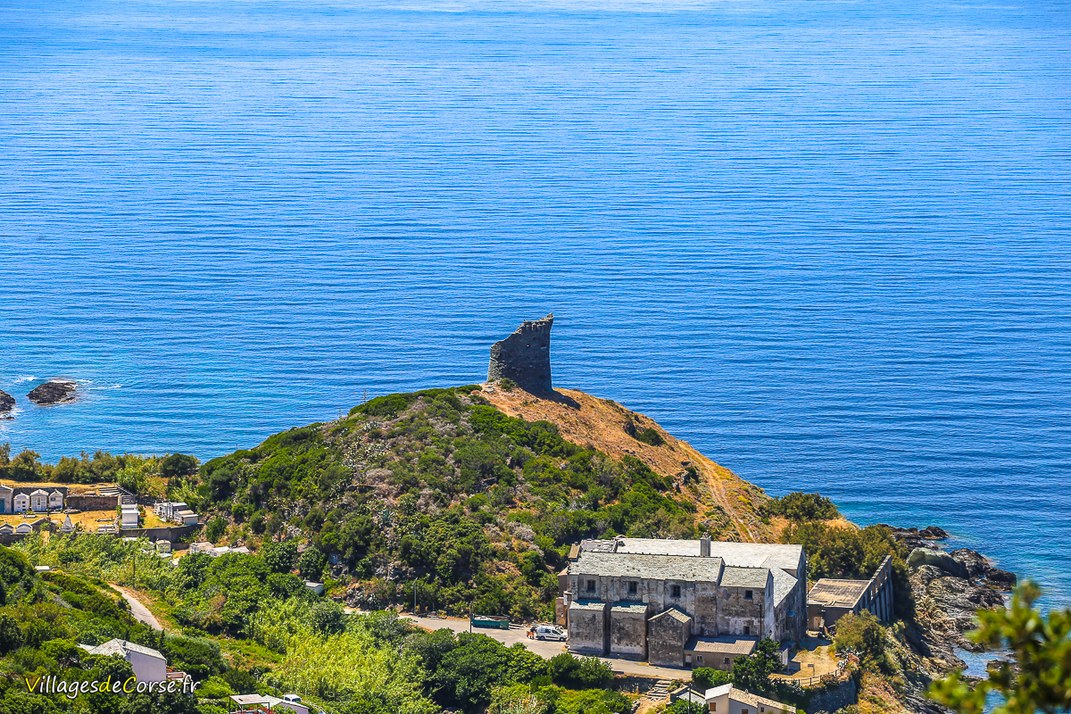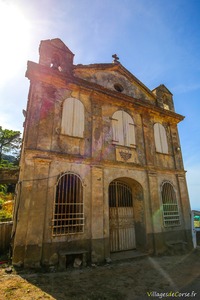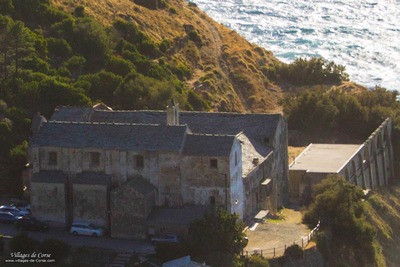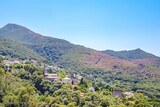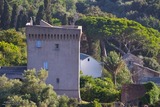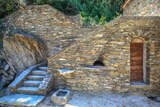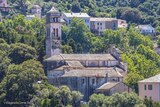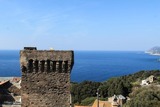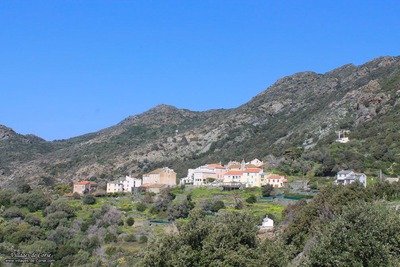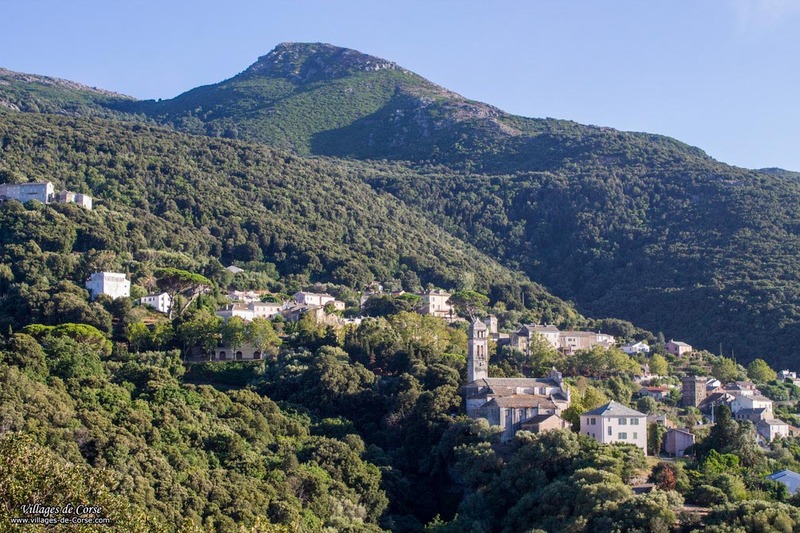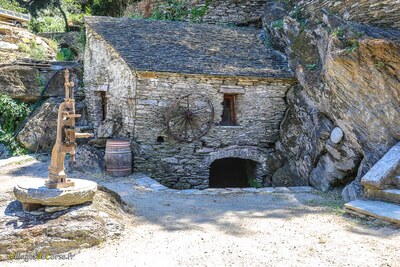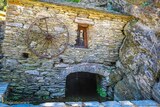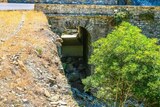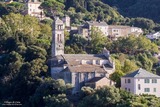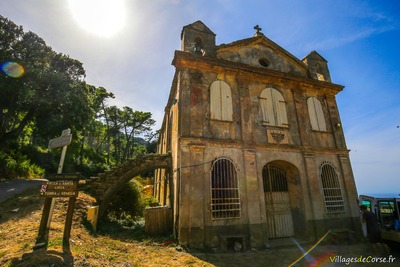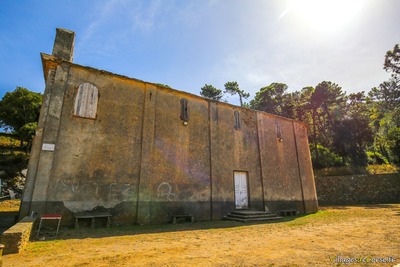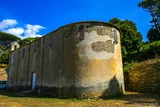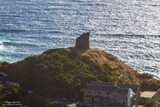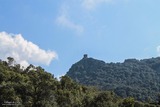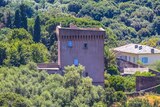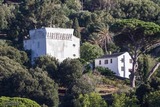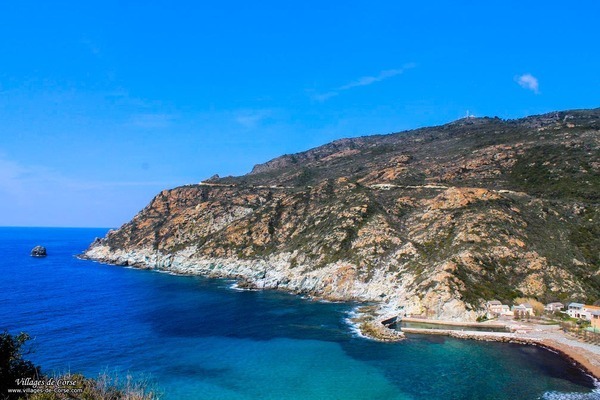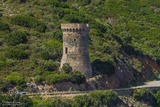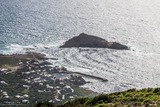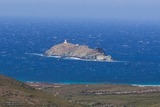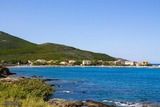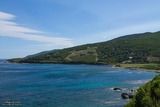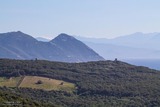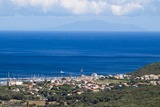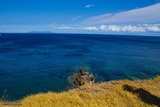Pino
Pinu, 154 PopulationInsee Pino 0 to 836 meters 704 hectares
To discover Pino (Cap Corse) - Google Map
Origin of the Name
The name of the village of Pino refers to the Stone Pine, from the Latin Pinus pinea, which is commonly found in the Mediterranean basin.
Village Photos | Mill | Bread Oven | Bridge
Religious Heritage
Church of Santa Maria Assunta
The Parish Church of Our Lady of the Assumption (Santa Maria Assunta) dates back to the 18th century. It is a baroque building classified as a historical monument.
Chapel of Sainte-Lucie
Located at the Sainte-Lucie pass at an altitude of 400 meters, connecting the two slopes of Cap Corse between the communes of Pino and Luri, the Chapel of Sainte-Lucie was built on the site of an ancient church of the same name.
Nearby was also the chapel of Santa Maria, of which no trace remains.
The road adjacent to the chapel provides access to the Tower of Seneca.
Convent of Saint Francis (San Francescu)
Built in 1495 and preceding the construction of the Tower of Scalu, the Convent of Pino was originally an Observantine convent capable of accommodating up to fifty Brothers, later becoming a Franciscan convent. It also served as a refuge for the local population during raids.
After the French Revolution, numerous orders for its closure and the expulsion of the Franciscan Brothers were issued by the government, each met with resistance and local solidarity to preserve the convent.
A testament to its historical and heritage value, the monument was featured in Stéphane Bern's "Heritage Lottery" program in 2018. The Convent of Pino is currently undergoing restoration projects.
Learn more about the History of the Convent San Francescu of Pino
The Defensive Towers of Pino
Square Tower of Ciocce
Visible from the road while traversing the historic village in the eponymous hamlet, the square tower of Ciocce overlooks the sea from just over 100 meters in altitude. It features Pisan architecture and dates back to the 16th century.
The building has now been entirely refurbished into guest rooms.
Scalo Tower
Also visible from the road, the Genoese tower of Scalo (Scalu), also known as the Tower of Pino, stands on a rocky coastal mound facing the sea and is located 50 meters from the Convent of Saint Francis. It is partially destroyed. Further north lies the Marine of Scalo.
Seneca Tower (Torre di Seneca)
The Seneca Tower—named after the Roman philosopher exiled to Corsica in the 1st century—is situated near the Sainte-Lucie pass. Built on the ridge at an altitude of 560 meters, it allowed surveillance of both the eastern and western shores of the island. Now in ruins, it was constructed in the 14th century near another, older tower that had a cistern. It is said that this latter tower sheltered the Roman philosopher.
Tower of Pino
Raid and Betrayal of Filippu Arbellara (Mammi Pacha)
Pino is the birthplace of Filippu Arbellara. After converting to Islam, he became a pirate of the seas, known by his Turkish name, Mammi Pacha. In 1563, Mammi Pacha commanded an entire Turkish fleet that attempted to raid the village of Pino and narrowly missed capturing the Tower of Scalo, whose ruined state remains a historical marker. This Turkish defeat is attributed to the superior of the Convent San Francescu, who recognized Mammi Pacha as the child he had taught to read and write.
Likely feeling a sense of shame, he pretended with his army to withdraw before launching an assault on the neighboring villages of Centuri, Morsiglia, Barrettali, and Ogliastro – see the history of the Tower of Albo – which they raided and plundered, massacring the inhabitants and taking hundreds of Corsican slaves.

